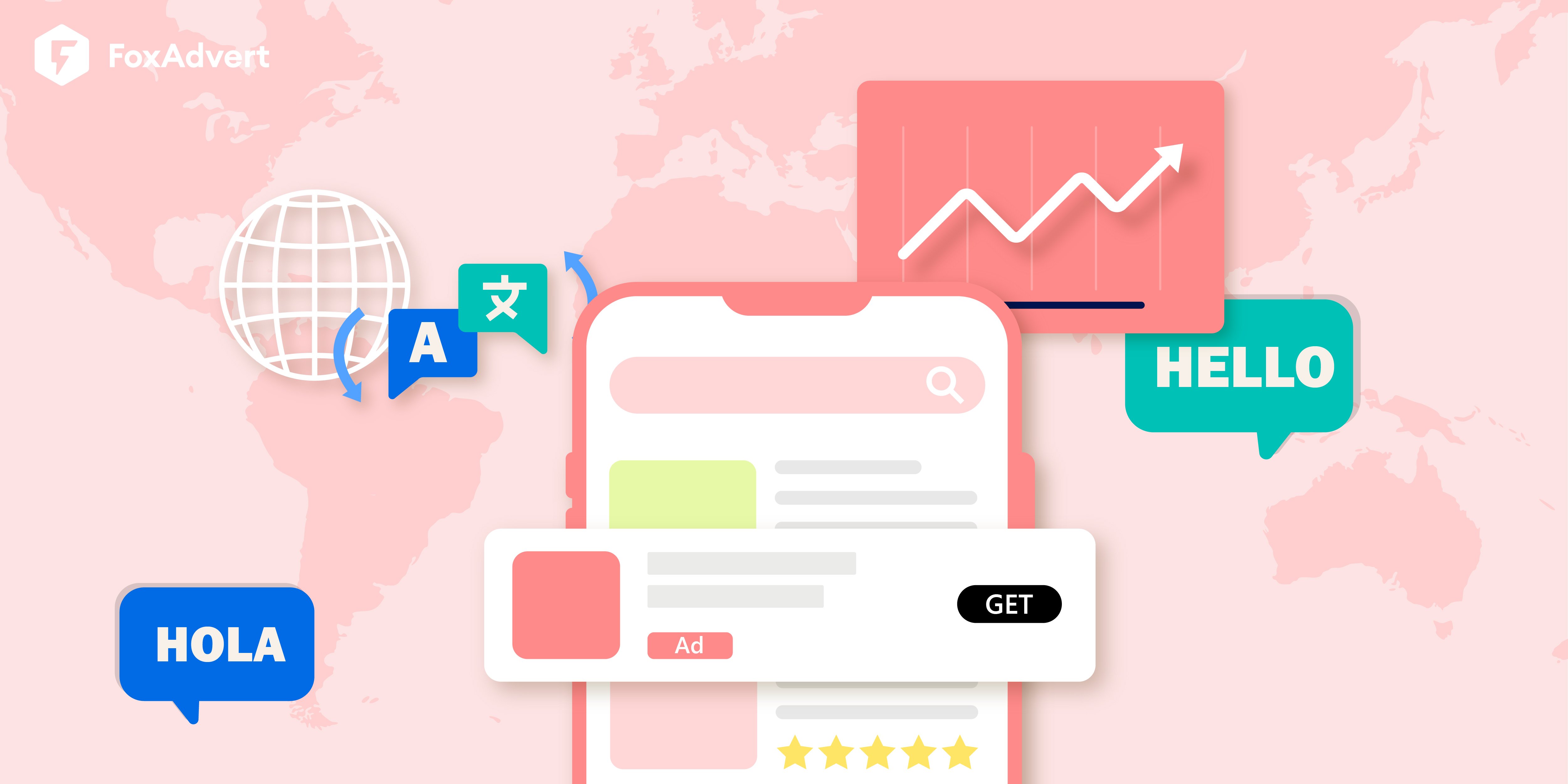
App localization isn’t just about translating text—it’s about crafting a seamless, native experience that resonates with local audiences. Done right, it unlocks new markets, drives revenue, and strengthens user engagement.
Relying on English alone means leaving opportunities behind. Only 20% of the world speaks English, and most users search for apps in their native language. In 2024, India, Brazil, and China led in downloads, while China and Japan ranked among the top in revenue (Statista). Ignoring these markets means missing millions of potential users.
A well-localized app doesn’t just translate—it adapts to cultural preferences, user behavior, and expectations. From localized keywords and metadata to optimized visuals and descriptions, every detail contributes to better discoverability and conversion. ASO experts suggest that app stores favor localized content, making it a key factor in search rankings.
In a competitive app marketplace, localization isn’t optional—it’s the key to sustained growth and visibility.
App localization can be categorized into two primary approaches, each serving different strategic purposes based on time, budget, and market-entry goals.
Minimum Viable Localization (MVL) focuses on translating only the most essential elements of an app or its store page into the target language. This typically includes:
App name and subtitle
Short description
Key UI elements (e.g., buttons, menus)
MVL is a practical solution when time or budget is limited, allowing apps to enter new markets quickly without significantly impacting key performance metrics. It’s particularly useful for testing demand in unfamiliar regions before committing to full localization.
Complete localization goes beyond basic translations, ensuring that the app feels native to users in a given market. This involves adapting all app elements to align with cultural preferences and user expectations.
Key considerations for effective complete localization:
Visual elements: Use culturally relevant images, icons, and colors. (Example: Red symbolizes luck in China but signals warnings in Western countries.)
Linguistic adaptation: Avoid direct translations—use local slang and idioms for a natural feel. Native speakers should review content.
Regional formatting: Adapt measurement units and date formats (e.g., "miles" & MM/DD/YYYY in the US vs. "kilometers" & DD.MM.YYYY in Germany).
Feature prioritization: Highlight app features relevant to specific markets. (Example: A weather app might showcase a hurricane tracker in the US but not in Europe.)
Monetization adjustments: Align pricing strategies with local purchasing power and payment preferences.
While complete localization requires more resources, it maximizes user engagement, conversion rates, and long-term market success when entering competitive regions.
Successful app localization isn’t just about translation—it’s a data-driven, strategic process designed to maximize market expansion while minimizing risk.
When launching an app for the first time, full-scale localization isn’t the priority. Instead, the focus should be on testing in a primary market—one that speaks your app’s native language.
Once an app gains traction in its primary locale, the next step is to expand to markets that share linguistic and cultural similarities.
Once the app has proven success in culturally adjacent markets, the next phase is global expansion—targeting regions with entirely different languages, cultural expectations, and user behaviors.
Successful app localization goes beyond translation—it requires strategic adaptation in three key areas: keyword optimization, creative assets, and seasonality.
Optimizing keywords for each locale is crucial for visibility and ranking in the App Store and Google Play.
Leverage Existing Data – Start by identifying high-performing keywords from your primary locale.
Optimize Placement – Integrate localized keywords into the app name, title, subtitle, and descriptions.
Adapt Communication Style – Different markets have distinct preferences.
Google Play-Specific Tip – Since Google Play indexes long descriptions, ensure priority keywords appear 3 to 5 times for better ranking.
Visual elements play a crucial role in app store localization.
Incorporate Cultural References – Use local landmarks, flags, maps, and city names.
Leverage Emojis Strategically – Be mindful of cultural differences.
Feature Local Elements – Showcase local people, traditional clothing, and regional foods.
Optimize Screenshots by Region – Highlight the features that matter most to local users.
Align with Local Aesthetic Preferences – Typography, design styles, and color psychology vary by culture.
Major Sporting Events – Example: Super Bowl (US, February) or World Cup (global, every four years).
Political & Cultural Milestones – Example: Elections or national celebrations.
Regional Holidays & Festivals – Example: Diwali (India), Chinese New Year, or Thanksgiving (US).
Seasonal Trends – Example: Hurricane season (US), back-to-school campaigns, or winter holidays.
Apple’s App Store Connect assigns each territory a primary language and several additional supported languages. These interrelated locales enable a cross-localization strategy, allowing apps to be indexed in multiple regions using metadata from a different locale.
Google Play’s custom store listings allow developers to create alternative versions of their main store listing tailored to specific audience segments.
Using custom product pages, app marketers can create up to 50 personalized listings, customizing elements such as:
App name, descriptions, and messaging
Localized icons and visuals
Screenshots, videos, and feature graphics
Localization isn’t a one-time effort—it requires data-driven iteration. A/B testing should be a core component of ongoing app store optimization (ASO), ensuring that keyword strategies and creative assets remain effective across different markets.
App localization is more than just translation—it’s about strategically adapting your app for new markets while aligning with local user expectations. A data-driven, well-executed localization strategy enhances visibility, conversion rates, and user retention, ultimately strengthening brand presence in an increasingly competitive app ecosystem. When done right, it’s not just an expansion tactic—it’s a growth engine.
Want to maximize your app’s global reach? FoxAdvert specializes in advanced digital marketing, ASO, and paid advertising strategies to help you optimize app localization, boost user engagement, and drive sustainable revenue worldwide.
Contact us today and take your app to the next level!